There are roads for animals passing over roads for humans.
Discover some of the most amazing wildlife overpasses around the world.

What are wildlife overpasses?
Wildlife crossings such as wildlife overpasses, green bridges and ecoducts are structures that have been built over roads to allow wildlife to cross it safely. These structures are used in habitat conservation and against their fragmentation.
Moreover, they reduce wild animals and vehicules collisions.
In the particular cases of wildlife overpasses or green bridges, animals walk over the road, and the vehicles go through the structure.
Most of the tunnels are between 10 m (30 ft) and 60 m (180 ft) wide. They typically have soil, litter, and vegetation on top to provide suitable habitat for a range of different species and species groups.
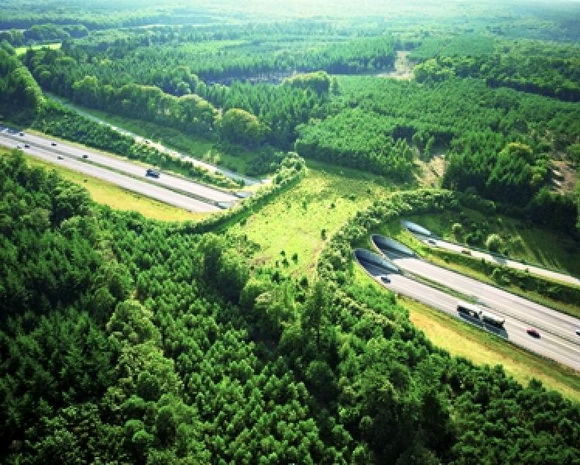
What are different types of wildlife crossings?
There are different kinds of wildlife crossing structures.
These include wildlife tunnels, viaducts, and green bridges, but also comprise amphibian tunnels, fish ladders, canopy bridge tunnels and culverts for small mammals such as otters, hedgehogs, and badgers as well as green roofs for butterflies and birds.
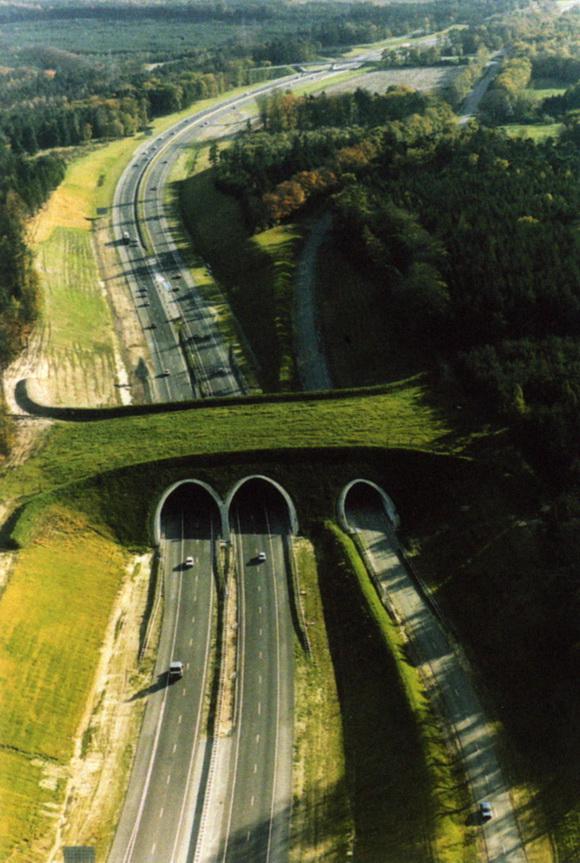
The larger wildlife crossings such as viaducts and overpasses are typically intended for large mammals ranging from ungulates (e.g. deer, elk, moose) to large carnivores (e.g. black bear, grizzly bear, Canada lynx, wolverine, wolf).
Others are made for fish.
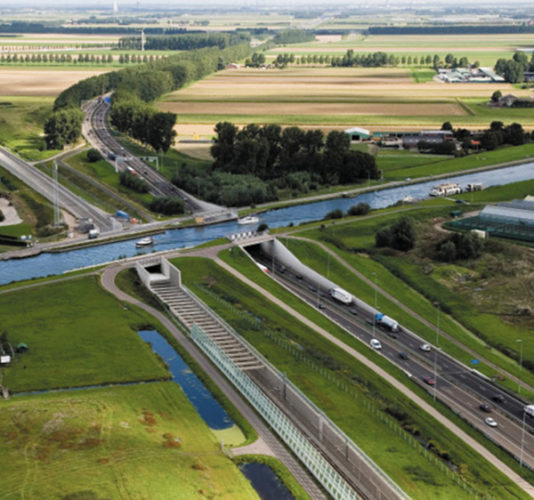
How to construct an ecoduct?
It all depends on the animals you want to use the structure you are building.
Sometimes ponds are created on one or both sides of the structure to increase the attractiveness to wildlife and to stimulate the use of the overpass.
It is also possible to pump water to the top of an overpass and create small streams that flow to the sides. This is particularly beneficial to amphibians.
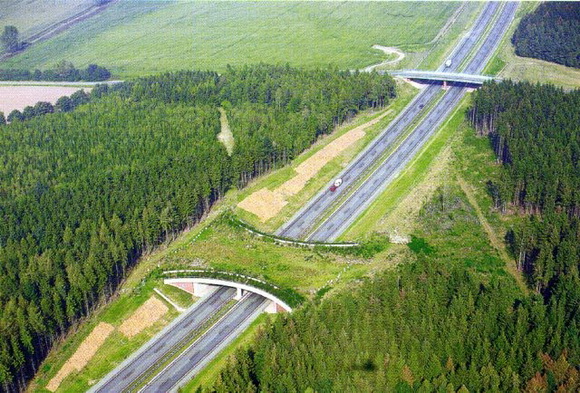
Cover, for example through a row of tree stumps, is important for invertebrates, amphibians, reptiles, and small mammals.
Fences, screens, or berms on the sides of the overpasses not only keep animals from jumping off the structure, but also reduce light and noise disturbance, and block out the fast moving vehicles below.
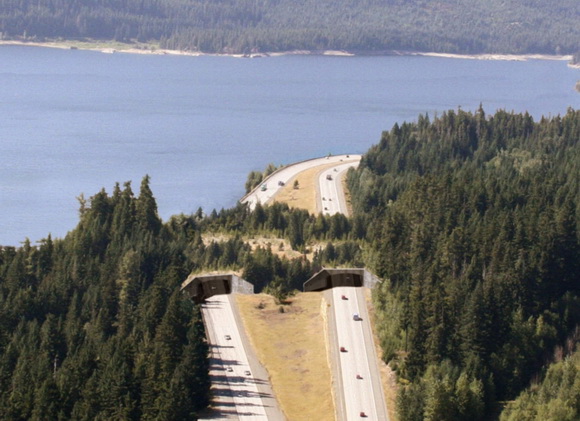
Animal crossing important for habitat conservation and migration
Combined with wildlife fencing and underpasses, wildlife overpasses can reduce collisions with large mammals by 80 to almost 100%.
Numerous studies have also found that a wide range of wildlife species uses wildlife crossing structures, often in high numbers.
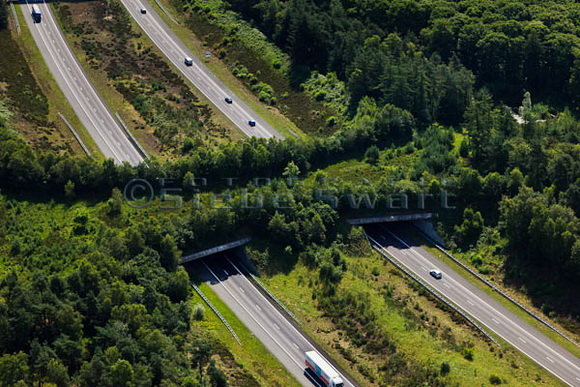
Green bridges are important as animals may need to reach the other side of the road for food or water.
Crossings may occur almost daily as the road may have fragmented the animal habitat.
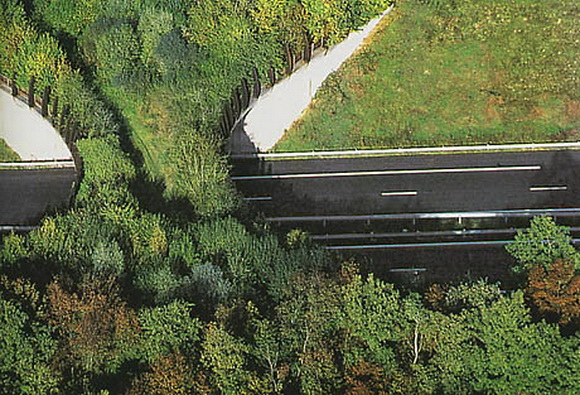
Migration over long distances is important as animals may need to reach habitat patches that are small and isolated to strengthen their population viability in the region.
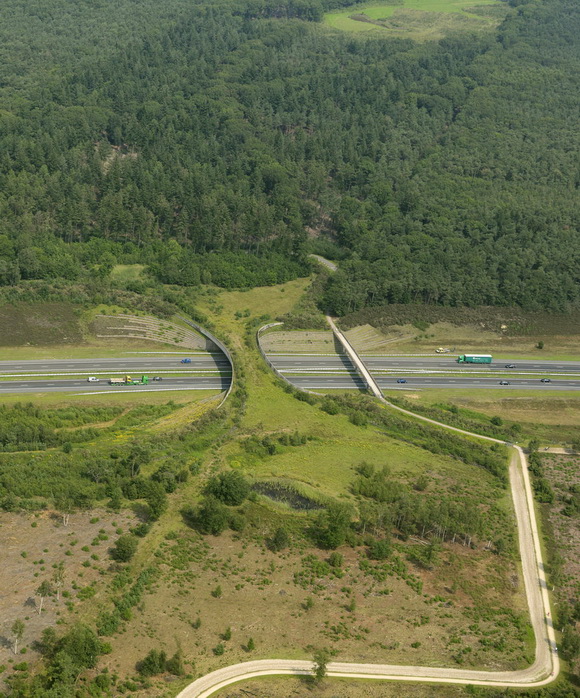
Other animaly may use crossing structures for seasonal migration or long distance dispersal.
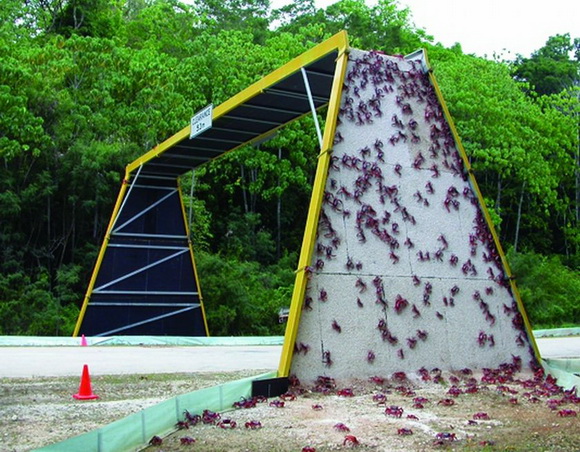
Many ecoducts are being built around the world to help animals to cope with the always growing numbers of highways and their habitat destruction and fragmentation. That’s very important for our future!


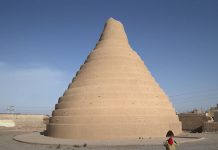




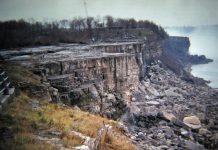




[…] now, officials have installed street bridges to better cope with this incredible animal […]
[…] information about his condition. The vehicle was towed to downtown Greenville. Too bad there are no wildlife overpasses in the […]
[…] Most other states have built wildlife-crossing structures – overpasses or underpasses – to facilitate the movement of wild animals across highways. This is not a new concept. The first wildlife crossings in North America were built more than 40 years ago. And few of these states were dealing with animals as large as a moose. In most cases concern has focused on reducing collisions with deer, elk, mountain goats, or bears. In some jurisdictions wildlife crossings have been built strictly for the sake of wild animals, ranging from threatened populations of cougars to salamanders. But in most cases, state departments of transportation have used wildlife overpasses or underpasses, in combination with fences, to minimize high-speed vehicular collisions with large animals because they result in property damage, human injuries, and fatalities. Alaska, which boasts the largest wild animals on the continent, is lagging behind. […]